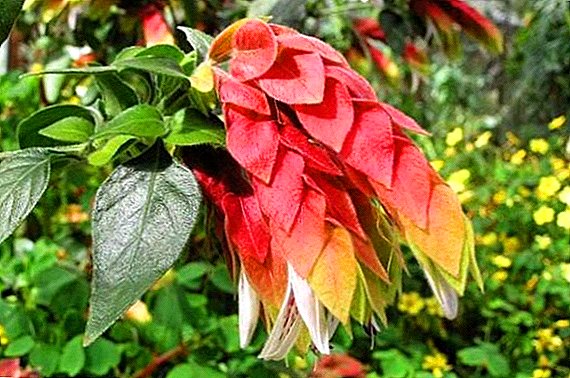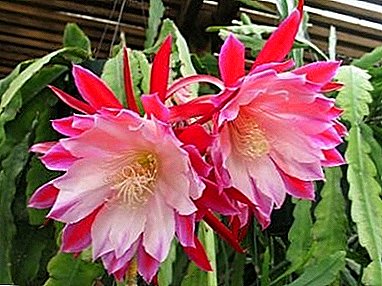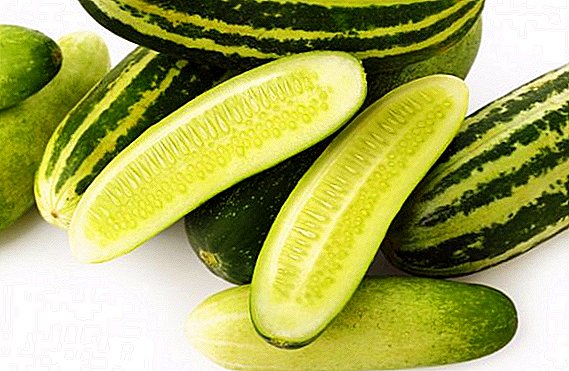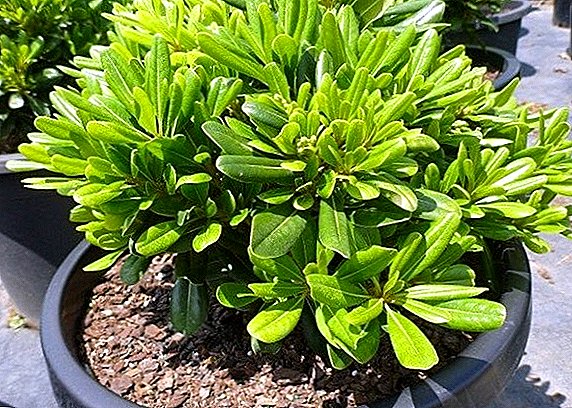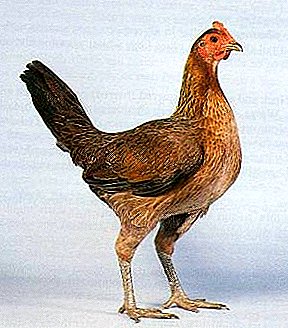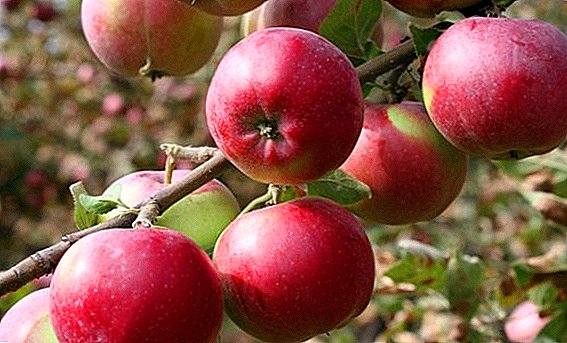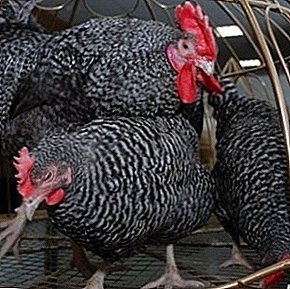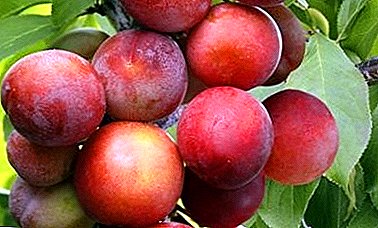
Plum - a well-known plant, it is difficult to find a garden in which it would not grow.
The prevalence behind it is a legitimate third place, it is second only to apple and cherry.
What is it just there, and where it just does not grow!
Learn more about it - and interest in it is guaranteed, and here on the site are not sadly stick out a few varieties purchased on the occasion, and pleases with multicolor and many ways to drain the different types and varieties.
Yes, yes, different species - the ancestors of garden trees were plants from different territories, unrelated to each other. Among them is the Chinese plum.
The most interesting representative of this species is the Chinese Chamelskaya large or Xenia plum.
Description varieties Ksenia
Plum Xenia - universal early variety, fruits yellow with red or purple blush, large, weighing from 35 to 45 grams, round, one size, petiolate funnel and abdominal seam of medium depth, juicy flesh, sweet yellow with a greenish tinge, medium-sized bone, loose.
Fruits have a very pleasant, peculiar taste without subcutaneous bitterness. Ripe fruits fall off easily.
The skin of the plum Xenia is very delicate and does not tolerate the indelicate treatment - please eat compotes, jams and juices, cook, and in distant lands our sissy will not finish.
 Plum tree varieties Xenia has a paniculate, rare crown, shoots are thick, arched grayish-brown.
Plum tree varieties Xenia has a paniculate, rare crown, shoots are thick, arched grayish-brown.
White flowers collected in inflorescences bloom in May, the leaf has not yet reached its full size, for this reason, the type of plant is very peculiar in its beauty.
Flowers tolerate frosts up to three degrees, and the plant itself holds the record for frost resistance, according to various sources, it can withstand from thirty to fifty degrees below zero. Also resistant grade Xenia to fungal diseases.
A photo





Breeding history
Chinese plum Xenia It has Far Eastern roots, its wild relatives live in the northern regions of China and Japan.
Breeder M.N. Malyunin, employee of the Research Institute of Gardens of Siberia M.A. Lisavenko received this variety by selection among seedlings of the variety Krasny Shar with free pollination. The work was carried out at the selection station of the Altai Mountains in the village of Chamal.
Planting and care
Chinese plum formed in a climate with harsh winters with little snow, cold wet summer and dry autumn, and with these weather preferences must be considered.
Plum varieties "Xenia" does not tolerate excessive moisture, rot.
This feature must be taken into account when planting a young plant - for it groundwater is destructive, lying above one and a half meters relative to the soil surface, you should choose a landing on ridges and hills.
Ridges for planting are also needed in cases where the snow depth is at least 80 centimeters.
Ridge device simple - height is about 50 centimeters, width is about two meters. The humus is taken as a basis, 2 handfuls of superphosphate, a handful of potassium salts, a shovel of wood ash per one humus bucket are mixed with it. In that case, if the soil is heavy, it is not bad to add a bucket of sand.
The length of the ridge does not matter, taking into account the number of seedlings with a distance between which not less than two meters. In the event that there is no threat of rotting, the usual landing pits are about half a meter deep and about 80 centimeters by 80 in diameter. The soil for the seedling is prepared as in the first case.
 Seedling must be no older than two years, more mature plants more difficult to tolerate transplantation.
Seedling must be no older than two years, more mature plants more difficult to tolerate transplantation.
So, the young plant is planted, the soil is carefully trampled (the roots should be in close contact with the soil and the air layers are unacceptable).
Along the edge of the landing pit roller is arranged from the soil, the water should not be spread during watering. A plant plentifully watered and tied to a peg is shortened by one third or half.
Fertilizers laid down during planting is enough for three to four years. Overfeeding plum is not necessaryThis leads to a decrease in yield due to excessive branching.
Chinese plum "Xenia" likes moist soil, but in no case is not too wet, basal irrigation is excluded; in the absence of precipitation, only irrigation is sufficient in June, July and August.
Plum likes dry autumn, but if the moisture is low, the foliage begins to fall from the top and then the branches. This is a signal of the plant itself about the lack of moisture, but do not confuse this phenomenon with leaf fall.
Plum Xenia enters fruiting in the third or fourth year after planting and stably bears fruit for ten years, and with proper care longer. Tree formation held before the start of fruiting, and sanitary pruning is carried out annually.
When planting a plum, you need to keep in mind that pollinating neighbors are necessary for normal fruiting, and if you plant this wonderful plant, choose a couple of interesting varieties with the same flowering period. In this case, to remain without a crop just will not work.
Reproduction plum
Chinese plum well propagated by stones, but do not forget about the stratification, but rather sow in the winter on a special bed. If the next spring shoots did not appear, do not destroy the beds, wait for the next spring, and there already draw conclusions.
The second method gives full varietal purity, since it is vegetative.
When planting, the root collar deepens and shoots grow from the scion. Deepening can be done later, the main thing is to be careful, the growth from the roots will give an analogue of the stock.
Diseases and pests
Chinese plum "Xenia" it is quite resistant to diseases, and this is very good, because our local pests do not disdain the resettlement, perhaps - and they don’t notice the difference.
 Measures to combat them have long been developed and are quite effective: insecticides before and after flowering the collection and burning of fallen leaves, whitewashing trunks with lime mortar with the addition of clay, mullein and iron vitriol
Measures to combat them have long been developed and are quite effective: insecticides before and after flowering the collection and burning of fallen leaves, whitewashing trunks with lime mortar with the addition of clay, mullein and iron vitriol
By diversifying the varietal composition of plum plantations, you will enrich the fruit table.
Not everyone likes subcutaneous plum sourness, and in the Xenia plum it is completely absent, even the bitterness that occurs in Chinese plum is not.
Absolutely clean unreal taste - what distinguishes it from most other varieties that are often found in gardens, and for many this dignity will seem very important.


